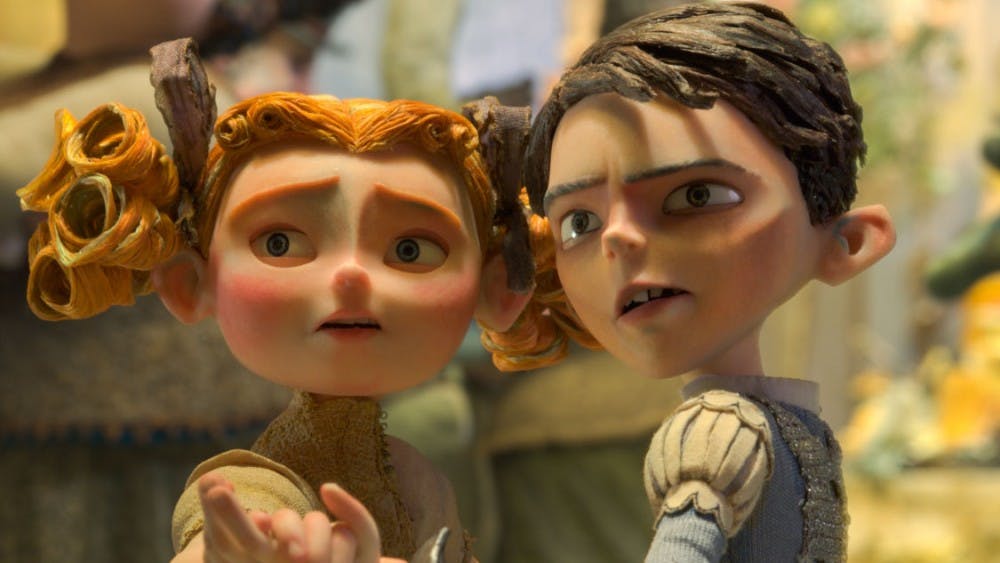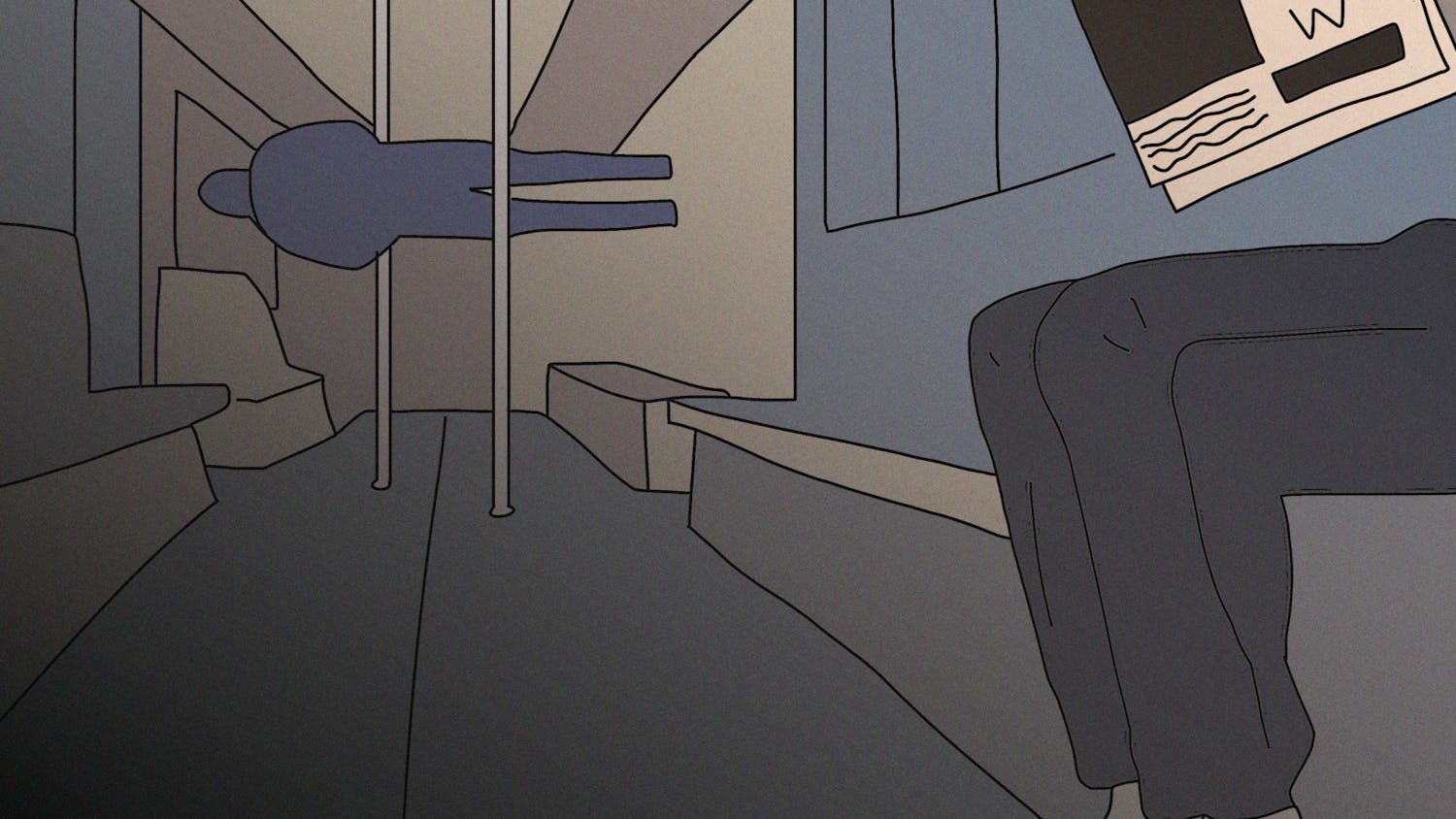The Post catches up with alumnae Emily Greene and Samantha Levy, who worked on LAIKA’s The Boxtrolls, which is nominated for the Best Animated Feature at this year’s Oscars.
Ohio University has a link to this year’s Oscars.
Alumnae Emily Greene and Samantha Levy worked as a set designer and production assistant, respectively, on the stop-motion animated film The Boxtrolls, which is nominated for Best Animated Feature.
Greene graduated from OU in 2007 with a Master of Fine Arts degree in production design and is now a set designer for LAIKA, the animation studio that created The Boxtrolls. Levy graduated in 2011 with her bachelor’s in video production and is now a landscape artist at LAIKA.
The Post caught up with Greene and Levy to talk about their careers and the film.
The Post: How and why did you choose your particular field and what is your favorite part of your job?
Emily Greene: I like creating environments for a story to be told within. … These environments start from the ground up. They’re nothing before I come in. Then I come in and there’s something.
Sam Levy: I’ve always been really fascinated with how movies look and with creating environments, so I think with stop motion in particular, you get a lot of creative control because you’re fabricating every piece of it. I think that always drew me to it.
The Post: What is the difference between a landscape artist and a set designer?
Sam: My department is responsible for fabricating all of the exterior environments (trees, rocks, etc.) … Emily’s job informs my job. Her work informs the landscape department of what we are building. She provides the framework of what the other shops then need to fabricate.
Emily: Basically, my job is to figure out what (the concept art) means in actual space. …Then we have storyboards where you’re seeing a space from lots of different angles and you figure out how to see the space and what space needs to do. … Another part is the scale of the puppet. It’s not just life size. How big does it need to be in relation to our puppet?
The Post: How did you end up at LAIKA doing stop motion animated films?
Emily: I actually never saw myself in film at all. I always thought I would do theater… And I did do theater for a long time after OU. I worked as a freelance set designer in the Bay Area doing theater. Then I literally just stumbled upon this job, and it worked out for me and that’s what I ended up doing.
Sam: Originally, I wanted to work in children’s entertainment, and I started working for a children’s show on campus called “The Everybody Show” and my contribution to that show was creating little animated interstitials and I just went from there and eventually I was able to … work on stop motion projects in my film production classes.
The Post: Sam, what drew you to children’s entertainment?
Sam: I think I like the idea of producing something that is going to inspire children because I know the things I was inspired by when I was little growing up, watching Sesame Street and stuff like that. And I definitely was encouraged to be really imaginative when I was little, and I think that passing that on is pretty inspiring to me.
The Post: Emily, what’s the hardest part about going from theater to film?
Emily: What’s funny is it’s actually so similar. … We build little sets and it’s just basically the same as building a set for theater. Even down to we draft in the same programs that I drafted in for theater.
The Post: What is it like working on a stop-motion film? What is the most exciting part and the hardest part?
Sam: I think the hardest part is when it comes together at such a slow pace that it’s hard to believe that you are actually ever going to make it to the end. But I think the most rewarding part is when you do see it all said and done, and it’s just this incredible unified masterpiece that was made just one day at a time.
The Post: How many models did you have to build for filming?
Emily: We generally have a specific scale we decide early on about how big we’ll build these puppets. But sometimes there will be a particular shot in which they need to do something else. You might need to build a bigger version because it’s something you’re seeing very, very close up. … Then if there is something that is a really large environment that you’re seeing from far away, we might build that as a miniature.
The Post: How did your time at OU help to prep you for the real world?
Emily: At the time I was there, Ursula Belden was head of the production design and technology department, and she was just such a force in my life and made such a difference in the way that I approach design and also in giving me skills that I use on a daily basis. For me, my graduate education at OU, it gave me everything I needed in order to do what I do.
Sam: For me, I think the main thing I got was the freedom to really explore. Frederick Lewis was my professor there that really encouraged me … to do these unconventional projects as a part of the film production classes, and I think that space really encouraged me to explore stop motion.
The Post: Do you have any advice for current OU students?
Sam: People discourage people from studying things like film but in my experience, as long as you have a concrete trade, as long as you can bring something to an employer … then you’re going to be OK.
Emily: Being prepared to think outside of the box about what they’re going to do. I never ever would have thought that I would have ended up here.
The Post: What was it like to be a part of a team and a project that is nominated for one of the most prestigious awards in the film industry?
Sam: I think that it’s definitely an honor to get to be a part of it. Those nominees really go down in history and getting to have your name, no matter how small your part is, having your name be associated with something that is going to be remembered in time, it’s an honor.
Emily: That’s a big difference between theater and film. … With theater, you see something one time and that’s all that it is. From then on, it just exists in the memory of the people that saw it. With film, you can always go back. It will always be there. It will always be something people can see and remember.
Both Greene and Levy are working on LAIKA’s newest project Kubo and the Two Strings, which will premiere August 19, 2016.
@buzzlightmeryl
mg986611@ohio.edu






